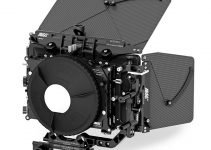In case you’re wondering how do the latest 2017 5K iMac and 2017 MacBook Pro stack up against each other when it comes to performing system-intensive video editing tasks in the studio or on the go, you’ve just come to the right place.
First and foremost, both Mid 2017 models included in the comparison below pack an impressive set of hardware components under the hood including the latest generation Intel Kaby Lake quad-core i7 processors, Radeon Pro 560 and 580 GPUs, a decent amount of RAM as well as 512GB fast SSDs. The bigger difference, though, becomes more evident when you compare the results based on the performance of the video editing platform you pick for the job as well as the complexity of the projects that each computer needs to handle.
As expected, you won’t be able to get the same level of efficiency out of those machines when you compare the real-world performance of FCPX, Premiere Pro, and DaVinci Resolve 14 running side-by-side on both computers. To put things into perspective, Max Yuryev provides some extensive benchmark tests that should give you a more in-depth and precise insight which one of the platforms you should opt for to be able to get the best video editing experience and optimal performance out of these top-spec machines.
Apparently, the harder you push both computers, the more distinct performance differences you’ll be able to find. For instance, the latest 5K iMac is at least 40% more productive when you compare it to the brand new 2017 MacBook Pro when it comes to video editing in Premiere Pro CC and DaVinci Resolve 14 whereas the difference becomes even more noticeable with the more complex 1080p and 4K projects, something that can be clearly seen in the benchmark tests below.
Furthermore, the larger screen real estate that the 27-inch 5K iMac display brings to the table makes the video editing experience a lot more convenient and productive when compared to the MacBook Pro. Nevertheless, both machines were able to achieve some impressive results, particularly when stabilizing 4K footage in FCPX.
In the meantime, the scores of these benchmark tests were a bit different when you compare them with the performance of Premiere Pro CC. According to Max, if you prefer to work with the Adobe NLE, and you’re looking for a portable solution, you should better get a PC laptop such as the latest Dell XPS 9560 laptop that also features 7th-generation Kaby Lake processors and can handle 4K video much more efficiently than these counterparts, especially when you want to get the most out of Premiere Pro CC.
Just look at the massive difference between Premiere Pro CC and Resolve 14 when rendering the same 4K project on the latest 2017 MacBook Pro.
All in all, DaVinci Resolve 14 seems to be a decent alternative on both machines as it already provides most of the features that you’ll be able to find in Premiere Pro CC, plus it’s free and its overall performance in MacOS continuously improves over time.
FCPX, on the other hand, seems to be the go-to video editing platform in terms of speed, performance, and optimization, but the lack of many professional features is still a big deal breaker for many content creators.
Unfortunately, the performance of Premiere Pro CC regarding render times on the latest Mac computers is still behind the curve. We can only hope that this will change with the future CC updates, but for now, it seems that this is the optimal performance creative professionals particularly working with MacOS can get.
[source: Max Yuryev]
B&H Order Links:
Apple 27″ iMac with Retina 5K Display (Mid 2017)
Apple 15.4″ MacBook Pro with Touch Bar (Mid 2017, Space Gray)
Disclaimer: As an Amazon Associate partner and participant in B&H and Adorama Affiliate programmes, we earn a small comission from each purchase made through the affiliate links listed above at no additional cost to you.




Dear Adobe go f*** yourself 🙂 This is outrageous that the most expensive software is the slowest one – not only in rendering performance but also in real time preview. I can preview 4k files on my BMP 15′ 2016 in full res even with some LUTs but Premiere is choking on 1/2 res without any color adjustments – Shame, shame, shame…
Is performance any better on a Windows machine?
“FCPX, on the other hand, seems to be the go-to video editing platform in terms of speed, performance, and optimization, but the lack of many professional features is still a big deal breaker for many content creators.”
Which are cause I can’t think of any?
I had the same question. It was the most biased statement I’ve heard in a long time, and one that only someone that doesn’t use FCPX would even begin to say…
It’s kind of comparing Apples to Oranges. I have just bought a MacBook Pro 15″, and I will be editing on it. It will be much faster than my old machine. Why didn’t I get an iMac? Simple, I still will get one when I see what the Pro model is like. But the reason I didn’t get one right now is because I don’t want to be carting a 27″ iMac between locations every day! And that’s why these two machines can’t be compared. Because if you are even eyeing up a MacBook Pro, the chances are that the reasons you are doing so are because you think you need some portability.
If your machine is staying in one place, you’d buy the iMac. If you’re moving around, need to edit on location, or need to have the ability or option to edit wherever you are, you’d pick the MacBook Pro. They are not comparable in any way. What is amazing though is that you can even have a laptop that can throw around 4K footage like it was nothing. The silly thing is that this new MacBook Pro is actually far faster than my old Mac Pro that is sat chugging and straining its elderly way through even 1080p footage!
I’m sorry, but what are these professional features FCPX is missing??? This is a real question and it’d be great if the author of the article could tell me what it is I’m missing out on while I professionally cut films, ads, and short form projects??
When a client wants me on Avid or Premiere I use them, because that’s what they want, but far more often than not when I show them how to do the same task in FCPX they become confused as to why we aren’t just cutting in FCPX.
So I’d love to know these “professional features” you think are still missing in the current iteration of FCPX…
If you transcode the files to prores in Premiere, before working with it, it is almost as good as FCPX
If you transcode the files to pro res in Premiere before working with them in Premiere, (doesn’t take long… max 1-2 minute for LARGE files), PP becomes super fast- almost as FCPX… it becomes smooth as butter…